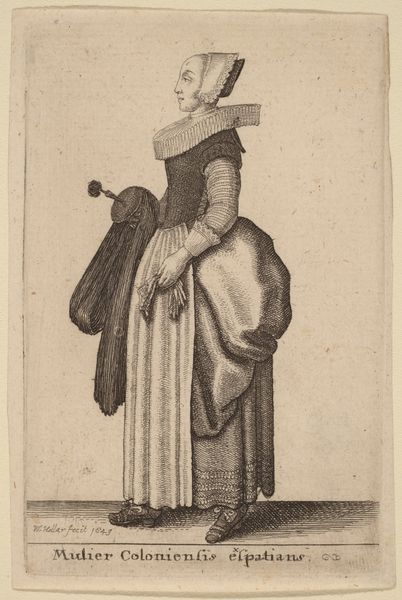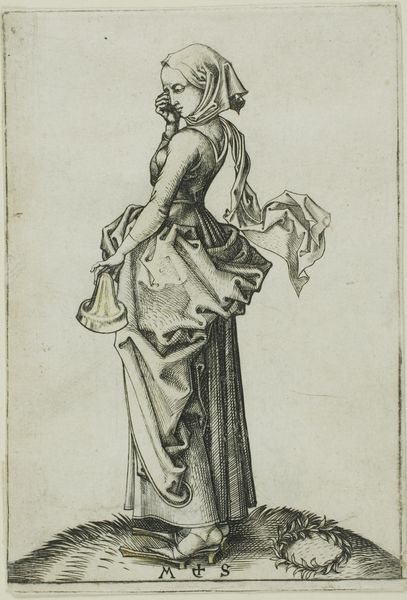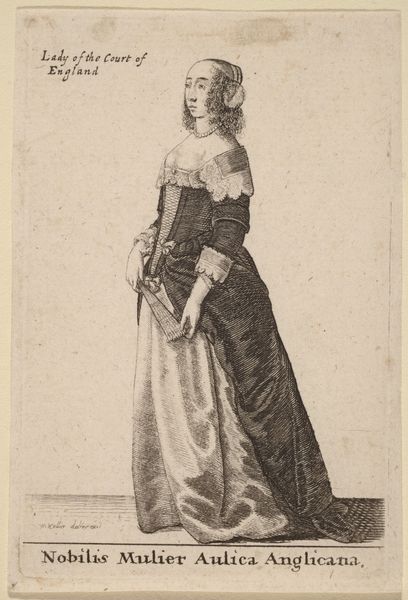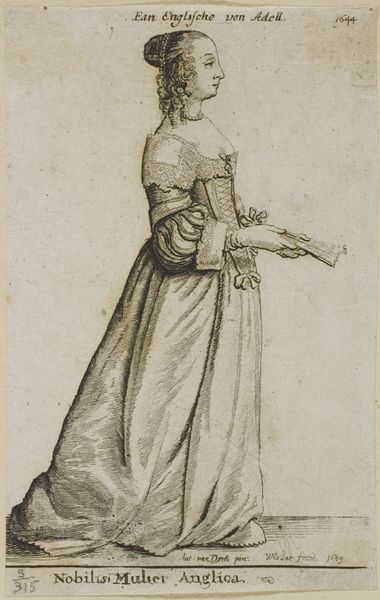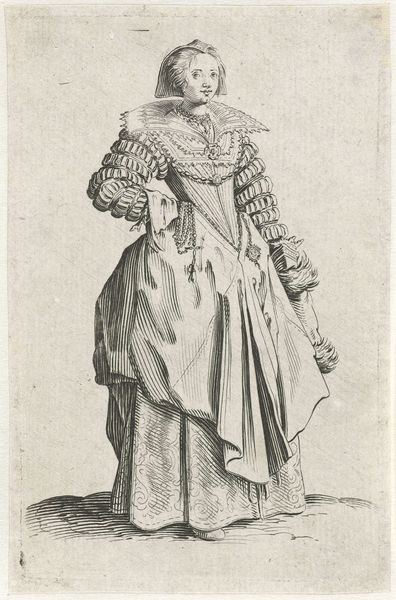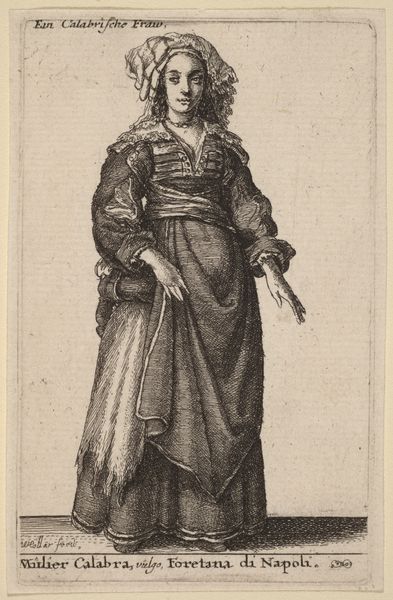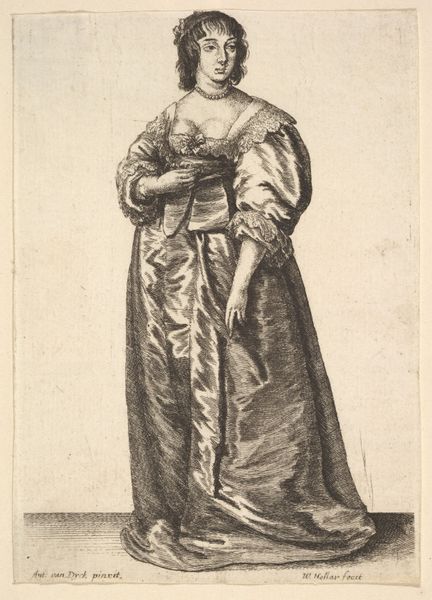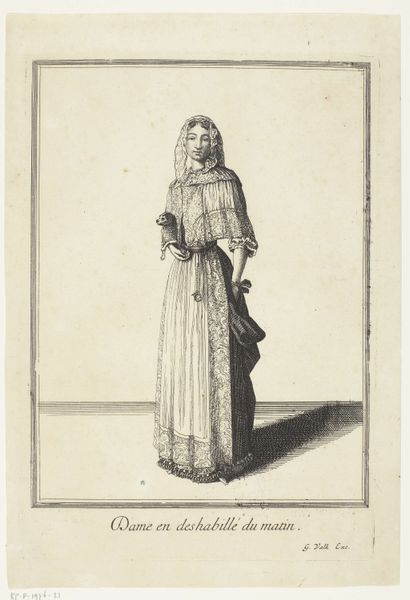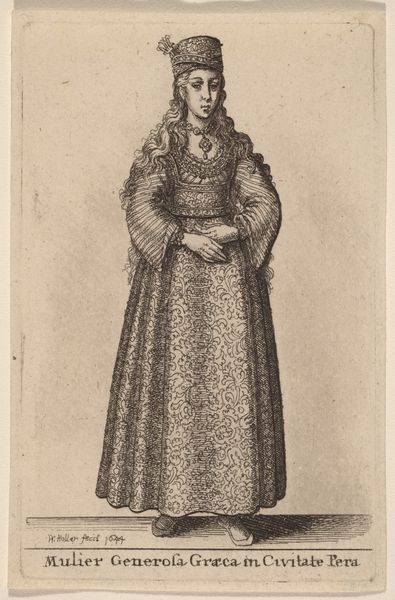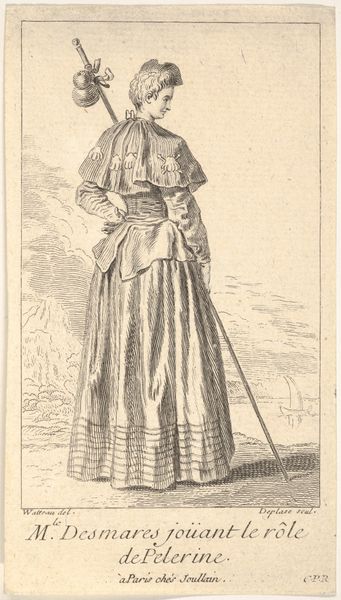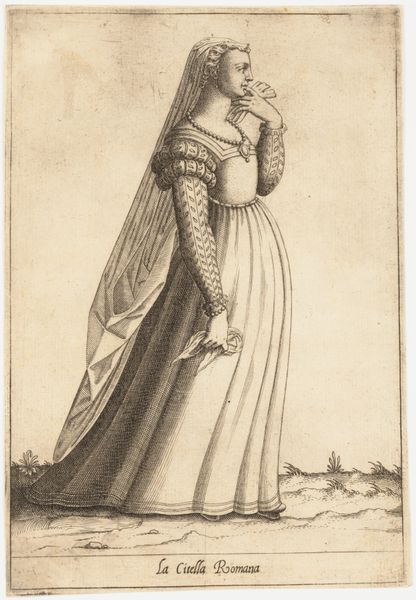
print, engraving
#
portrait
#
baroque
# print
#
figuration
#
portrait reference
#
old-timey
#
line
#
portrait drawing
#
history-painting
#
engraving
Copyright: National Gallery of Art: CC0 1.0
Curator: Immediately, there’s this sense of poised formality, almost a stage presence. Editor: Indeed. What we have here is "Mulier Generosa Gallica", a portrait print dating back to 1643. It's the work of Wenceslaus Hollar. Curator: The detail achieved through engraving is astonishing. The lace on her gown seems so tangible! It’s like Hollar wasn't just documenting fabric but its very texture and movement. Editor: Hollar made numerous prints documenting dress, you know. They were ways of transmitting styles and keeping track of fashions in circulation throughout Europe, and especially relevant considering political and class status. It is all carefully staged to project a specific image of wealth and influence. Curator: I see what you mean, a gentlewoman of France, no doubt. Yet, look at the intimacy of her gaze. There is a stillness here, too. As if we've caught her in a quiet, reflective moment amidst all the grandeur. Editor: Remember, prints circulated in multiple contexts. The meaning they acquired might depend on who owned them, where they were displayed, how they were collected, or altered over time. But you’re right, even across time and contexts, this depiction manages to preserve a real presence. Curator: And the contrast! Her slender figure accentuated by that tight-laced bodice against the sweep of that luxurious skirt. It's a real study of shape and volume. One could even say that in Hollar's careful construction, this work borders on propaganda, an exercise of soft power through image-making! Editor: It makes me wonder about her life outside this image, beyond this carefully constructed portrayal. Perhaps she did use her public-facing role to effect gentle persuasion! It also demonstrates just how complex portraits are: surfaces, symbols, power. They don't just look back at us, but implicate us in something far larger than an individual.
Comments
No comments
Be the first to comment and join the conversation on the ultimate creative platform.

